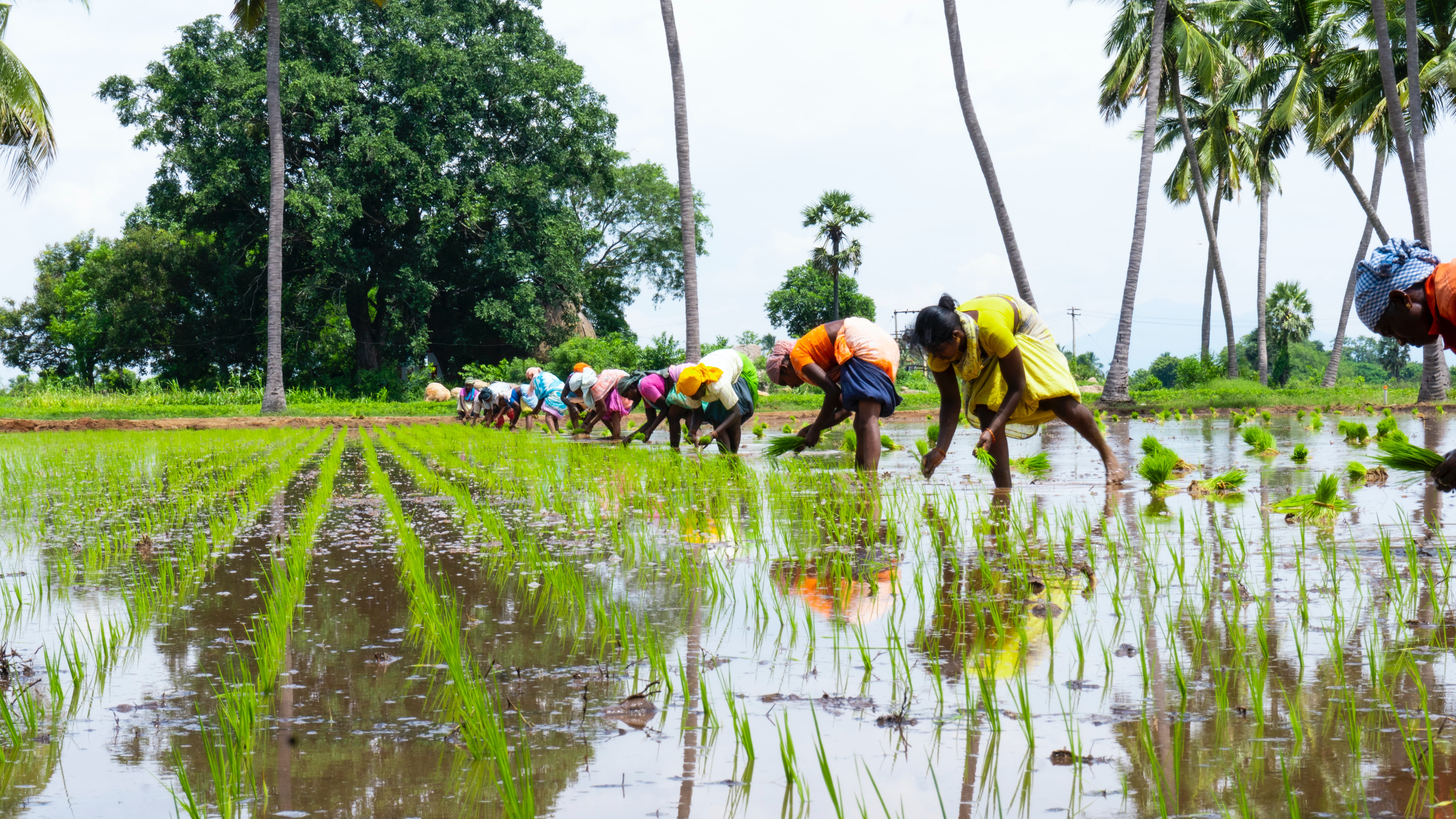What is sharecropping, and how can it fit into modern agriculture
Several production systems characterize agriculture in developing economies, among which one remains enigmatic for economists – “sharecropping,” a land tenure system where the worker may receive less than the value of their marginal product. What does this practice entail? How does it persist despite economic and social changes? This article aims to demystify sharecropping while incorporating crucial concepts such as risk and cost-sharing.
What is sharecropping?
Sharecropping typically works as follows: the landowner provides the land, seeds, and sometimes other necessary resources for production, while the sharecropper contributes with labor and physical effort to cultivate the land. Once the harvest is ready, it is shared between the landowner and the sharecropper, often based on a pre-agreed percentage. Sharecropping, where farmers reap a share rather than a fixed salary, raises the question of why the worker might receive less than the value of their marginal product. The key lies in how it addresses risk-sharing. Farmers, naturally more risk-averse than landowners, find sharecropping a means to transfer some inherent uncertainties in agriculture. Other possibilities, like combining wage and leasing contracts, seemed less effective due to information problems, as monitoring every worker’s action was costly, especially in agriculture, where perfect surveillance is nearly impossible due to environmental factors like weather, diseases, etc…
Sharecropping is viewed as a middle ground between the motivations of lease agreements and the uncertainties of wage contracts. Shifts in agricultural conditions, technology, risk factors, and supervision expenses can impact the equilibrium of contracts. Therefore, sharecropping is perceived as something other than an outdated or ineffective approach but rather a practical resolution to genuine challenges encountered by farmers.
This understanding of sharecropping is an example of a broader class of problems known as “principal-agent problems,” typical in various sectors, including labor and insurance markets, shedding light on different institutional structures in developed and less advanced economies.
Risk Sharing as an Explanation:
∙ Workers are often more risk-averse than landowners, meaning they are less willing to bear agriculture’s uncertainties and potential losses.
∙ Sharecropping contracts allow landowners to absorb a more significant share of risk than if workers rented the land.
While it was once thought that sharecropping existed primarily for risk-sharing in agriculture, it has been shown that this is not the whole story. Sharecropping involves combining wage and leasing contracts. With information problems, the agreement would specify the amount of labor. The challenge is that monitoring a farmer’s actions, such as ensuring proper weeding, is ideally too costly.
Cost Sharing in Agriculture:
Agriculture involves more than just labor and land. Costs of things like fertilizers need to be shared between the farmer and the landowner. However, the way prices are shared is only sometimes straightforward. Part of the reason for sharecropping is that it is challenging to observe the amount of effort the farmer puts in. Thus, the landowner should encourage more action by sharing some costs. Most crops require expenses other than labor and land. The question then arises of how to distribute these costs, for example, those related to fertilizers, between the landowner and the worker. Although sharecropping contracts generally involve some cost sharing, and the worker’s share of costs is often their share in production, this is not a universal rule.
How can we explain these deviations from the most straightforward and logical rule? It doesn’t sound very easy, but the cost-sharing equation, equal to the share of production, would favor an efficient use of resources. In other words, the worker would set his share of costs to correspond to the product value added by his labor multiplied by his percentage of production. When these two elements are equal, the value of the added product is similar to the additional cost generated. However, it is essential to note that sharecropping was motivated because it was challenging to observe the effort involved, which led to these particular contractual arrangements.
The landowner wants to encourage the workers to increase their efforts. Suppose the application of another input increases the worker’s marginal product and motivates them to increase their efforts. In that case, the landowner may want to subsidize that input (paying more than their proportionate share of costs). Additionally, cost-sharing contracts are preferable to contracts where the landowner specifies the input level due to the information asymmetry between landowners and workers: the worker can adjust input levels to changing circumstances in a way the landowner could not.
Practical Tips for Farmers:
Here are some practical tips for farmers, taking into account the context of sharecropping and shared costs:
- Make sure to fully grasp all the terms, including cost and profit sharing, before entering a sharecropping contract. This will help you make informed decisions.
- When working out the contract, strive for an equitable allocation of expenses and earnings. Ensure the conditions benefit the landowner and the laborer, establishing a lasting collaboration.
- Consider diversifying the types of crops you grow. Some crops may need more resources, while others may require fewer inputs. This can impact how costs and profits are distributed.
- Utilize resources wisely by closely monitoring input usage like fertilizers to optimize production and profits.
- Enhance your agricultural knowledge through investment in education, allowing you to effectively contribute to the farm with modern farming practices, awareness of weather conditions, and management techniques.
- Foster transparent communication with the landowner for swift issue resolution and positive relationship maintenance when challenges arise.
- Risk Mitigation: Investigate methods for handling agricultural risks, like crop insurance, to reduce possible losses.
- Consider joining local agricultural associations to exchange experiences, receive guidance, and stay updated on new farming techniques.
In conclusion, sharecropping emerges as a solution to the challenges faced by farmers, combining risk and cost-sharing in response to the complexities of agriculture. By demystifying this system, we shed light on broader economic principles, emphasizing the crucial role of risk and cost considerations in shaping agricultural contracts. Far from outdated, sharecropping represents an approach to navigating uncertainties, offering lessons for historical understanding and contemporary agricultural practices.
References:
- admin,+7-31+EN+-+Economics+of+Information+and+the+Theory+of+Economic+Developm (1).pdf
- https://texancultures.utsa.edu/cabin/history/
- https://www.jstor.org/stable/3741281
- https://www.battlefields.org/learn/articles/sharecroppers










































































